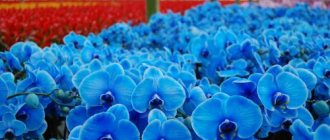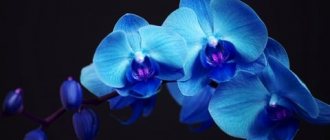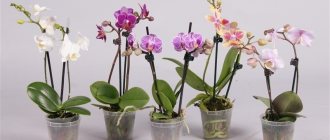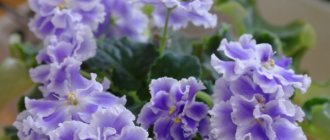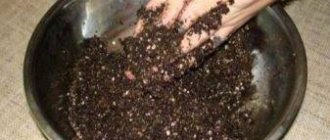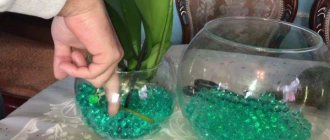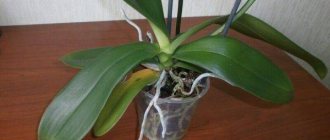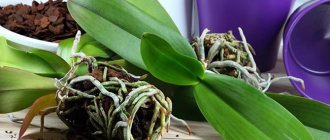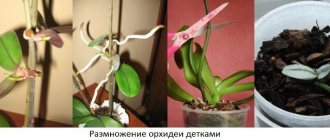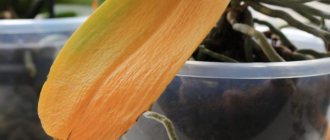The blue orchid is a rare and very attractive flower. The plant is found in India, Thailand, and Southern China. The flowers have a diameter of 9 centimeters. The shades of the petals are varied - from blue to red-violet.
An orchid can also turn blue when the petals are stained with chemical dyes or as a result of the dye being introduced into the stem. But such flowers cannot be called real. In nature, a prominent representative of blue orchids is the Vanda variety. Cattleya should also be noted. And Phalaenopsis is painted - this species does not have blue flowers.
Looking for the blue orchid
Features of the Vanda variety
The royal flower looks attractive, and its care should be appropriate. If you do not have knowledge of growing the plant, Wanda is unlikely to take root. The flower has many hybrids that are convenient to cross.
Is Phalaenopsis blue?
Blue specimens of the Phalaenopsis species are not found. But you can buy a blue flower, which is easy to care for. In the photo the plant looks very attractive, the smell is weak, not spicy. Phalaenopsis blooms for six months; the color of the petals may vary.
Features of the Cattleya orchid
Cattleya receives only positive reviews, as it is not too capricious, it does not require special care, and the plant looks charming. At home it blooms well, the palette of petal shades is varied.
Blue and blue orchids in nature
Wanda
The ancestor of blue orchids is Vanda, which is recognized as the queen of the variety. This variety is not recommended for novice flower growers to purchase, as it is very difficult to care for and requires special growing conditions. In practice, only experienced people succeed in growing the beautiful Wanda. Moreover, this variety is very easy to cross, resulting in hybrids of unimaginable colors. The gardener's patience and efforts are generously rewarded with unprecedented beauty. Recently, natural blue Vanda has been gaining good momentum in the flower industry.
Cattleya
This variety is popular among beginner gardeners, as it is less labor-intensive to care for than Vanda. In the photo on the Internet, Cattleya flowers are so beautiful that they will not leave anyone indifferent. Blue shades are not saturated, but rather delicate and pastel.
Ascocenda
It is a subspecies of Vanda, only easier to care for. It is a selection variety obtained by crossing vanda and a low-growing shrub called ascocentrum. It was from Wanda that the flower inherited its blue and blue colors.
Care depending on window location
- East window. In order for a blue plant to feel good on an eastern window, it should be placed in this place in the summer - from May to September. In winter, it is better to move the orchid to the south side. If you decide to leave the flower on the east window, in winter you need to provide it with additional lighting.
- North window. The blue snow leopard orchid and other types of the blue palette, located on the northern window, will not grow without artificial lighting, since partial shade is observed here all year round. It is lighting that has a direct impact on how the plant develops.
- West window. Caring for a flower located on the west window is the easiest. It's sunny here, but not too much. Some lighting problems may arise in winter, but most often there is enough light.
- South window. Royal Phalaenopsis feels good on a south-facing window, but since the plant placed here is always in the active growth stage, it may get sick. Sometimes burns may occur on the leaves, so it is recommended to place the plant behind a curtain.
Are there such colors?
In the most common genus of phalaenopsis orchids, varieties with blue petals were bred less than ten years ago and are practically not found on the open market ; the cultivation of this hybrid has not received a production base.
However, the demand for blue orchids has become so high that a unique dyeing method has been developed, which nurseries protect as a trade secret. On sale you can find flowers of various blue shades and even blue with pink streaks.
Blue orchids have become a popular interior decoration, both in Russia and in Europe. But, since the heavenly color is lost when they bloom again, they are used as a temporary decoration. And although the decorative effect lasts a little longer than that of cut flowers, you must be prepared that the plant will most likely die. Usually the label indicates that this is not a hybrid flower, but an exclusive method of temporary coloring.
If you don’t want to part with your favorite flower, you should pay attention to other varieties of orchids, and, first of all, to the hybrids of Vanda and Cattleya.
Basic cultivation methods
When growing at home, it is important to choose the right container and substrate for the orchid. It must be remembered that the plant appreciates free breathing.
According to reviews, the flower whose roots were not damaged during transportation has a better chance of taking root. Even if the humidity in the room is low, if everything is normal with the roots, the plant will not die.
Improper care in the form of too frequent watering can cause rotting of the roots and stem. According to statistics, this error is the most common reason why orchids die at home.
There are different ways to grow a flower:
- You can plant an orchid in a pot or coconut.
- If there is no pot, you can place the flower in a black plastic basket, while the roots of the plant will hang freely. The presented method is suitable for growing in an apartment; it is often practiced in greenhouses and conservatories.
- It happens that an orchid is planted in baskets made of twigs, slats, bamboo sticks, or in flowerpots.
- You can place the plant on a block and decorate the roots.
- It is allowed to place the flower in a regular glass vase.
Hybrid varieties of phalaenopsis
Aphrodite blue
The variety appeared using genetic engineering in Japan by crossing the Aphrodite variety, to which the “blue” gene was added. Not popular among flower growers, as the cost is very high.
Royal phalaenopsis
It blooms beautifully, but the blue color is achieved through injection dyeing. During subsequent flowering, the buds will be white.
Methods for propagating dendrobium orchids at home
Calimero Royal
It can also be dyed to obtain the desired shade. The orchid looks miniature, the variety is classified as dwarf. Easy to care for.
How to deal with temperature
The orchid will look like the picture if it is provided with the correct temperature conditions. It should be chosen depending on the type of hybrid. The optimal regime for keeping the flower is +14 degrees at night, +25 degrees during the day. However, even in 40-degree heat the plant will not die.
Spraying
The orchid should be watered and sprayed, since it is grown mainly without a substrate. The outer parts of the plant, its roots, should be sprayed. The procedure should be actively carried out in the summer, when the air in the room is quite dry.
In winter, plants are sprayed once every couple of days. Moisture should only reach the roots. When liquid gets on the leaves and cores, these parts of the plant begin to rot and the leaves fall off. Rotting of the core leads to the death of the plant.
After each spraying, wipe the orchid with napkins. Instead of spraying, you can water the flowers in the shower. The water temperature should be about 40 degrees.
Features of care during the rest period
In fact, blue orchids only experience dormant periods when optimal conditions are created. First of all, this concerns lighting. How do you know if a plant has enough light? The easiest way is to look at the roots. If there is enough light, the roots will be in a state of active growth, and the flower will look bright and healthy.
If there is not enough light, the color of the leaves will not be as bright, and the tips of the roots will begin to shrink or become covered with white skin. This is how the orchid tells you that it has entered a period of rest and its metabolism has slowed down.
What to do in this case? If you notice that the flower begins to enter a sleepy state, provide it with artificial lighting in the evening from 18 to 22 hours. Such lighting will prevent the plant from “falling asleep” and reduce the risk of infections.
Vanda Orchid: care features (video)
Caring for an orchid, no matter whether its petals are blue or not, should be carried out according to standard rules - timely spraying, sufficient lighting and optimal temperature. Blue flowers are quite rare, but if you want to get a specimen with an unusual shade of petals, you can choose blue varieties.
